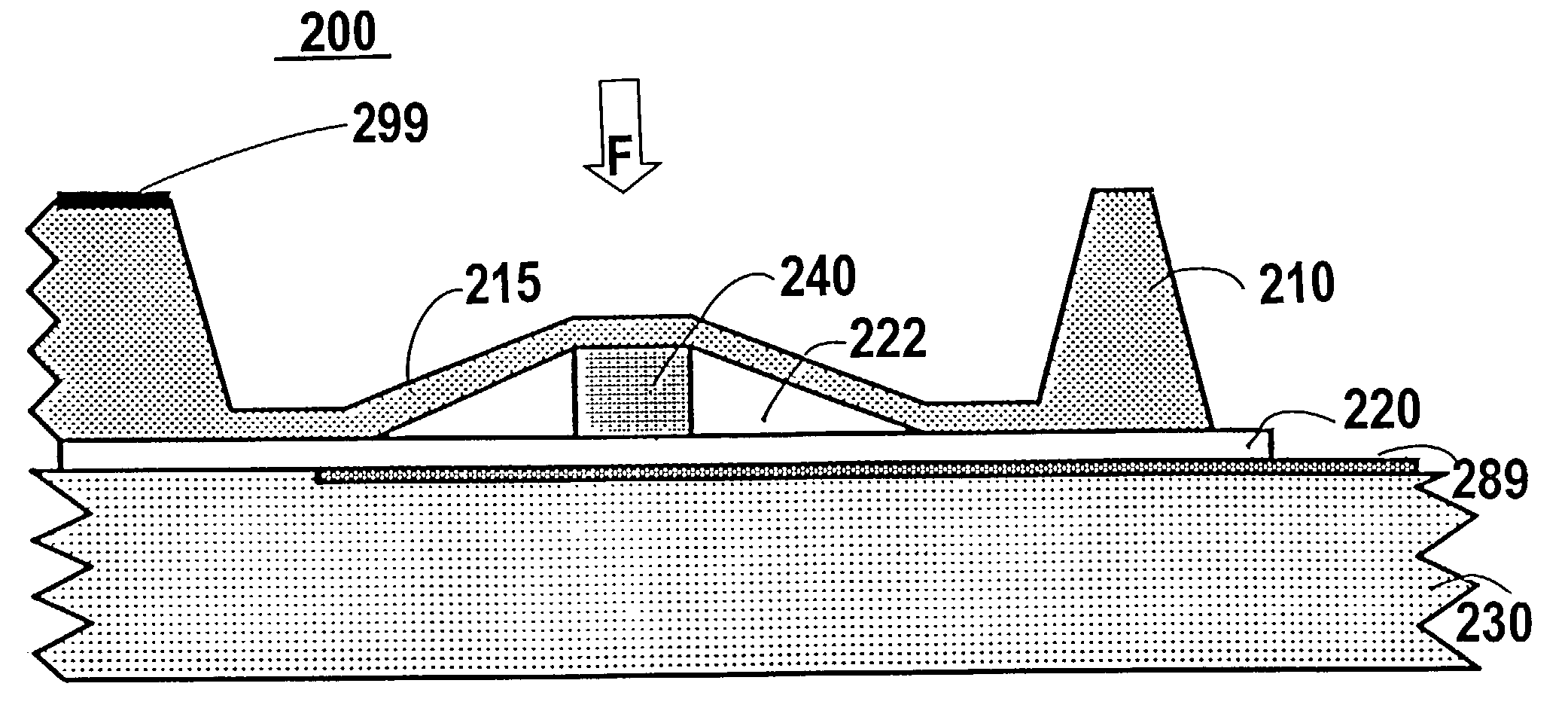Micro-electromechanical sensor
a micro-electromechanical and capacitive sensor technology, applied in the direction of fixed capacitor details, fixed capacitors, instruments, etc., can solve the problems of thermal-mechanical mismatch between glass and silicon, inability to achieve the same thermal expansion properties, etc., to achieve the effect of reducing the force range, maximizing the dynamic range, and reducing the sensitivity to force changes
- Summary
- Abstract
- Description
- Claims
- Application Information
AI Technical Summary
Benefits of technology
Problems solved by technology
Method used
Image
Examples
Embodiment Construction
[0043]As shown in FIG. 2, transducer 200 according to an embodiment of the present invention comprises substrate 230, a dielectric 220 (which may be disposed on the substrate 230), spacing member 240, and resilient stratum 210 disposed over the dielectric 220. In the illustrated embodiment, substrate 230 includes an optional conductive layer 289 that acts as an electrode of the capacitor. The resilient stratum 210 includes a diaphragm portion 215 that is configured to act as another electrode of the capacitor. The diaphragm portion 215 is at least partially separated from the dielectric 220 by spacing member 240. As shown in FIG. 2, dielectric 220 comprises a layer of a dialectic material, which may be selected by a person skilled in the art from know dielectric materials. Alternatively, dielectric 220 may be configured as a vacuum layer. Void 222, which is created by spacing member 240 between diaphragm portion 215 and dielectric 220, may be evacuated or may contain a displaceable ...
PUM
| Property | Measurement | Unit |
|---|---|---|
| diameter | aaaaa | aaaaa |
| diameter | aaaaa | aaaaa |
| diameter | aaaaa | aaaaa |
Abstract
Description
Claims
Application Information
 Login to View More
Login to View More - R&D
- Intellectual Property
- Life Sciences
- Materials
- Tech Scout
- Unparalleled Data Quality
- Higher Quality Content
- 60% Fewer Hallucinations
Browse by: Latest US Patents, China's latest patents, Technical Efficacy Thesaurus, Application Domain, Technology Topic, Popular Technical Reports.
© 2025 PatSnap. All rights reserved.Legal|Privacy policy|Modern Slavery Act Transparency Statement|Sitemap|About US| Contact US: help@patsnap.com



